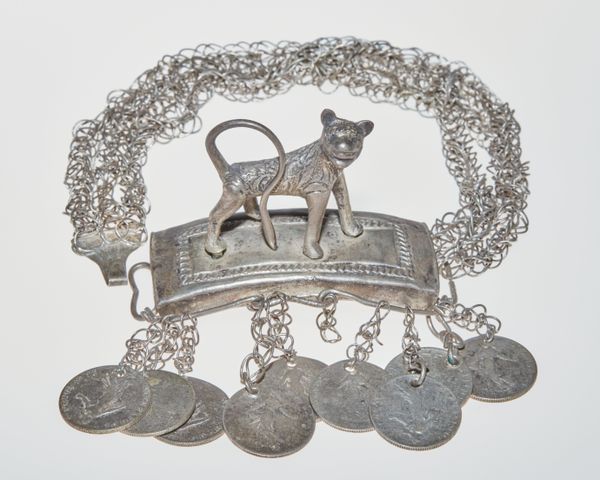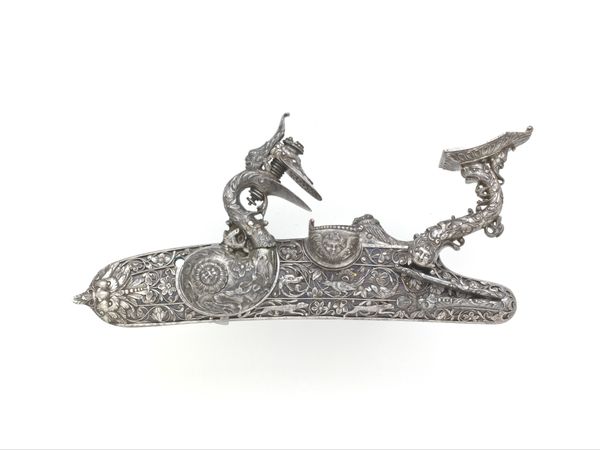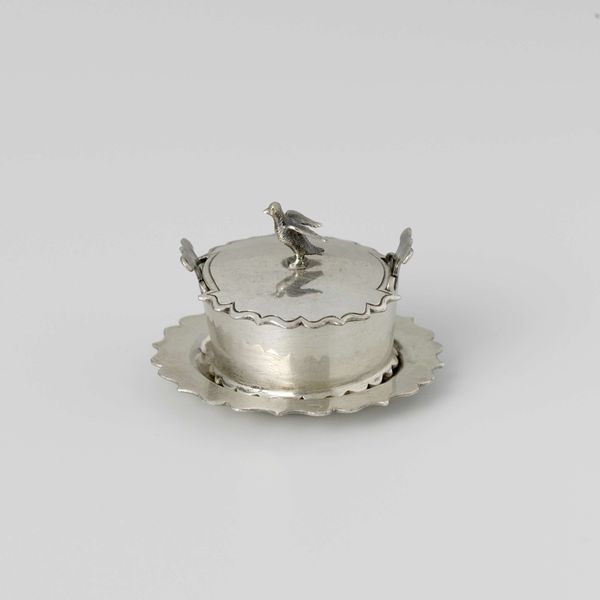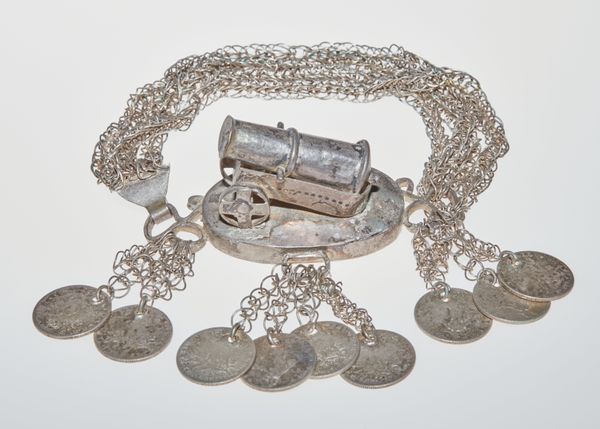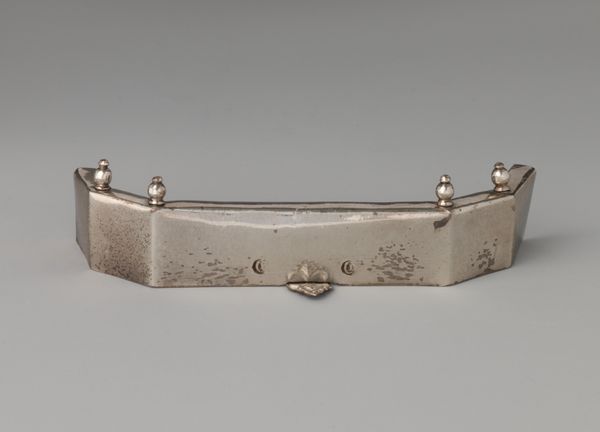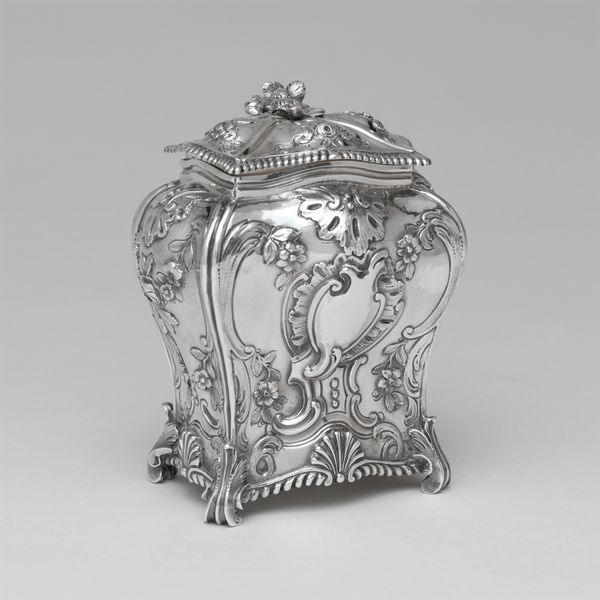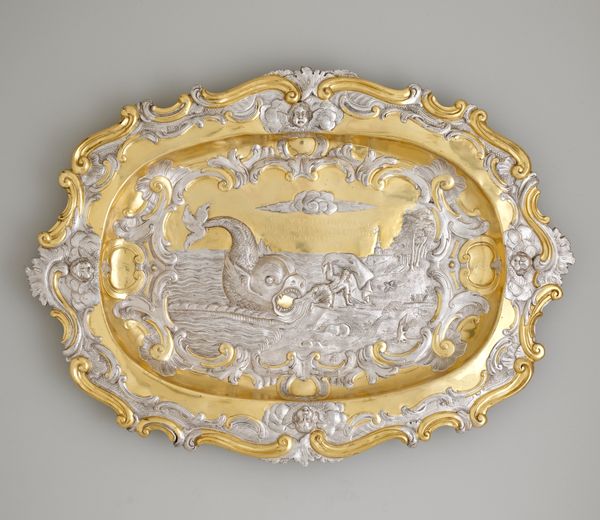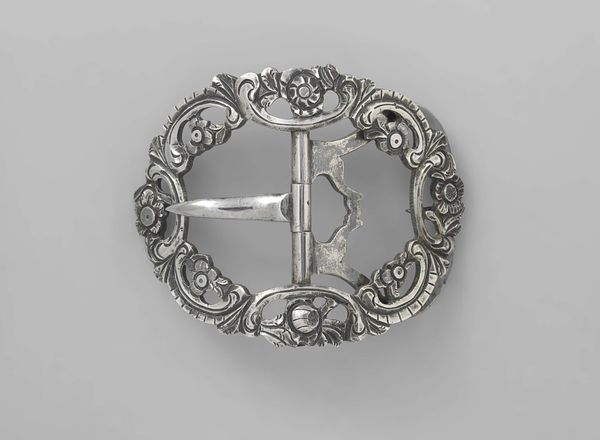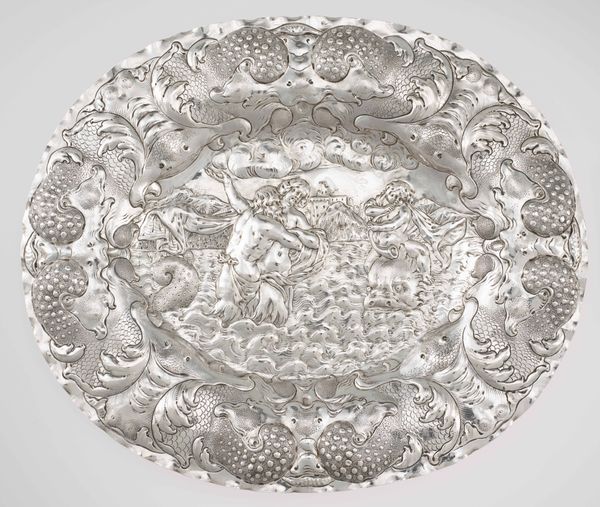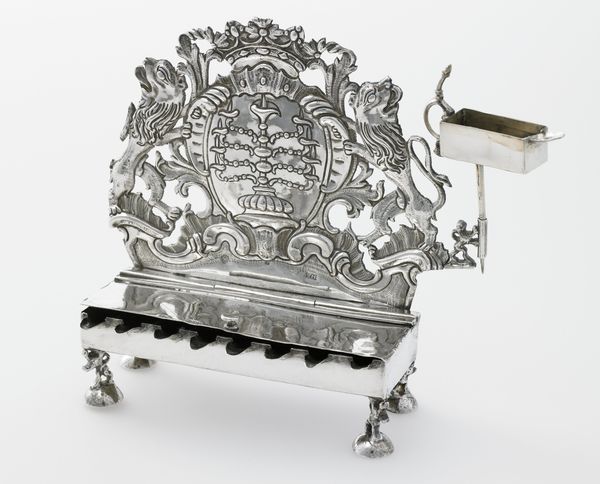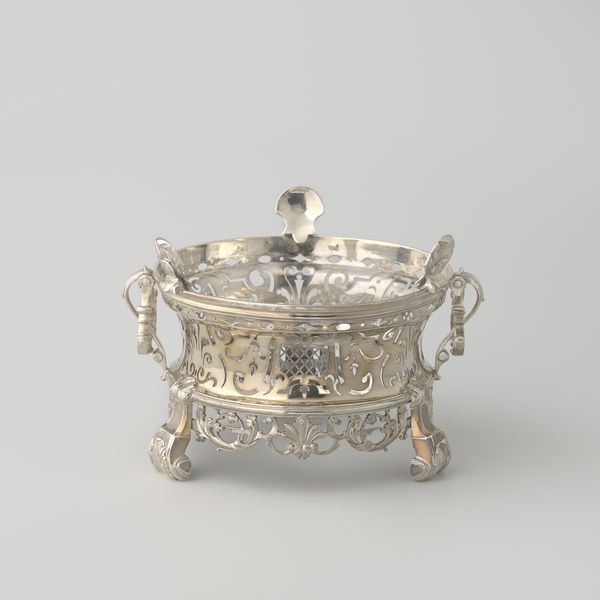
Bracelet with animal ornament and coin pendants c. late 19th century
0:00
0:00
silver, sculpture
#
silver
#
sculpture
#
sculpture
Dimensions: 1 5/8 × 2 3/4 × 2 1/4 in. (4.13 × 6.99 × 5.72 cm) (pendant only)
Copyright: Public Domain
Editor: Here we have a late 19th-century silver bracelet, featuring an animal ornament and coin pendants. I am struck by how the detailed animal contrasts with the flat, repetitive shapes of the coins. What design elements jump out at you? Curator: It is crucial to observe how the artist utilizes the reflective qualities of the silver. The way light plays across the varied textures—the chain links, the smooth animal figure, the embossed coins—establishes a visual rhythm. Can you see how the linearity of the chain is mirrored in the horizontal emphasis of the central bar and animal's body? Editor: I see it now. It's as if the artist built the piece around lines. So the animal sculpture acts as the central vertical accent? Curator: Precisely. The placement of the animal on the rectangular base serves as a fulcrum. Its form interrupts the otherwise strictly linear progression of the band, chains, and hanging coins. Moreover, observe the animal’s pose—is it static or dynamic? How does its implied movement relate to the stillness of the coins? Editor: It seems caught in mid-stride. The animal does create an element of movement that contradicts the static nature of the coins. I never thought of jewelry having that much compositional complexity. Curator: The effectiveness of this bracelet is contingent on these visual relationships. Each element's contribution to the overall structure invites deeper scrutiny. Now, how might changing just one of those elements affect the whole? Editor: Thinking about the interplay between static and dynamic elements, I agree that if the animal were removed or changed it would change the effect. Thanks for clarifying its formal structure and how it all fits together!
Comments
minneapolisinstituteofart about 2 years ago
⋮
More than one hundred years ago, the elite of the Danhomé Kingdom in West Africa would have worn these silver ornaments to adorn themselves and show off their wealth, and also to protect themselves from harm and evil. Fashioned by jewelers from imported silver coins, the ornaments were embellished with tiny sculptures that refer to past kings, heroic wars, and the Vodun religion. The coins attached to the ornaments date from between 1873 and 1910, bridging the last decades of the independent Kingdom and the first 15 years of French colonial rule.
Join the conversation
Join millions of artists and users on Artera today and experience the ultimate creative platform.
